Lizards may not yet be widely known for their smarts, but they’re becoming star study subjects for more and more cognition researchers. This is due to a growing list of findings that reveal rather impressive cognitive abilities.
At The Lizard Lab of Australia’s Macquarie University, Associate Professor Martin Whiting and his team specialize in investigating the cognition of various lizard species, as well as other herptiles. We talked with Martin about a few of the lab’s studies and their most interesting discoveries so far.
Q: Your team studies a broad spectrum of topics, including cognition and brain size evolution. What are some of the top subjects you’ve been looking at in these domains?
A: One question we are interested in has to do with how brain size is related to social demands. The social intelligence hypothesis suggests that larger brains evolve in highly social species that need to either keep track of many different individuals or multiple relationships.
We are focused on the Egernia group of lizards, which have a wide range of social and mating systems from solitary and promiscuous (i.e. multiple mating) to family-living and monogamous.
We are interested in measuring social complexity (the social relationships that lizards have) and whether species with greater levels of social complexity might have larger brains.
The human equivalent could be the number of friends you have on Facebook, except we plan on taking this a bit further and quantifying the nature of those relationships, as opposed to just how many relationships a lizard may have.
We are also interested in how global warming may impact learning and brains. To this end, we are incubating lizard eggs under warmer temperatures that we may expect under global warming, and then putting the babies through different learning tasks.
Q: One of your most recently published studies1 examined whether or not lizards are good at learning across different domains. That is, whether they’re good at different types of tasks, or they’re only good at specific types.
Can you tell us a bit more about how you tested the lizards and what you found?
A: We focus a lot on spatial learning because of its biological relevance. Spatial learning governs how animals gather information about the location of food or resources (e.g. shelter) in their environment.
We had previously found that in water skinks, some individuals do quite a bit better than others in a spatial learning task.

This might have to do with whether these males defend a territory or adopt a floater tactic to finding a mate. Floater tactics rely less on navigating and, instead, have to do with intercepting females off a rival male’s territory.
We had a group of males that were proficient in spatial learning and a matching group that basically failed the course! (They were considered non-spatial learners.)
We tested these lizards on an instrumental task and two discrimination tasks. Our goal was to establish whether lizards that are good at one task (i.e. spatial learning) are also good at tasks that cover multiple cognitive domains (domain general learning), or whether they are only good at some tasks at the expense of others.
We found two patterns: domain general learning in spatial learners, and domain specific learning in non-spatial learners. That is to say, the lizards that were good at spatial learning were also good at all other tasks, while the lizards that were poor spatial learners were nevertheless good at these same tasks.
Our take-home message from this paper is that we may need to rethink this paradigm. In other words, it might be a bit simplistic to break things down into domain general vs domain specific. We are better off understanding how learning ability varies among individuals because this is likely to be a factor that affects fitness (i.e. reproductive success).
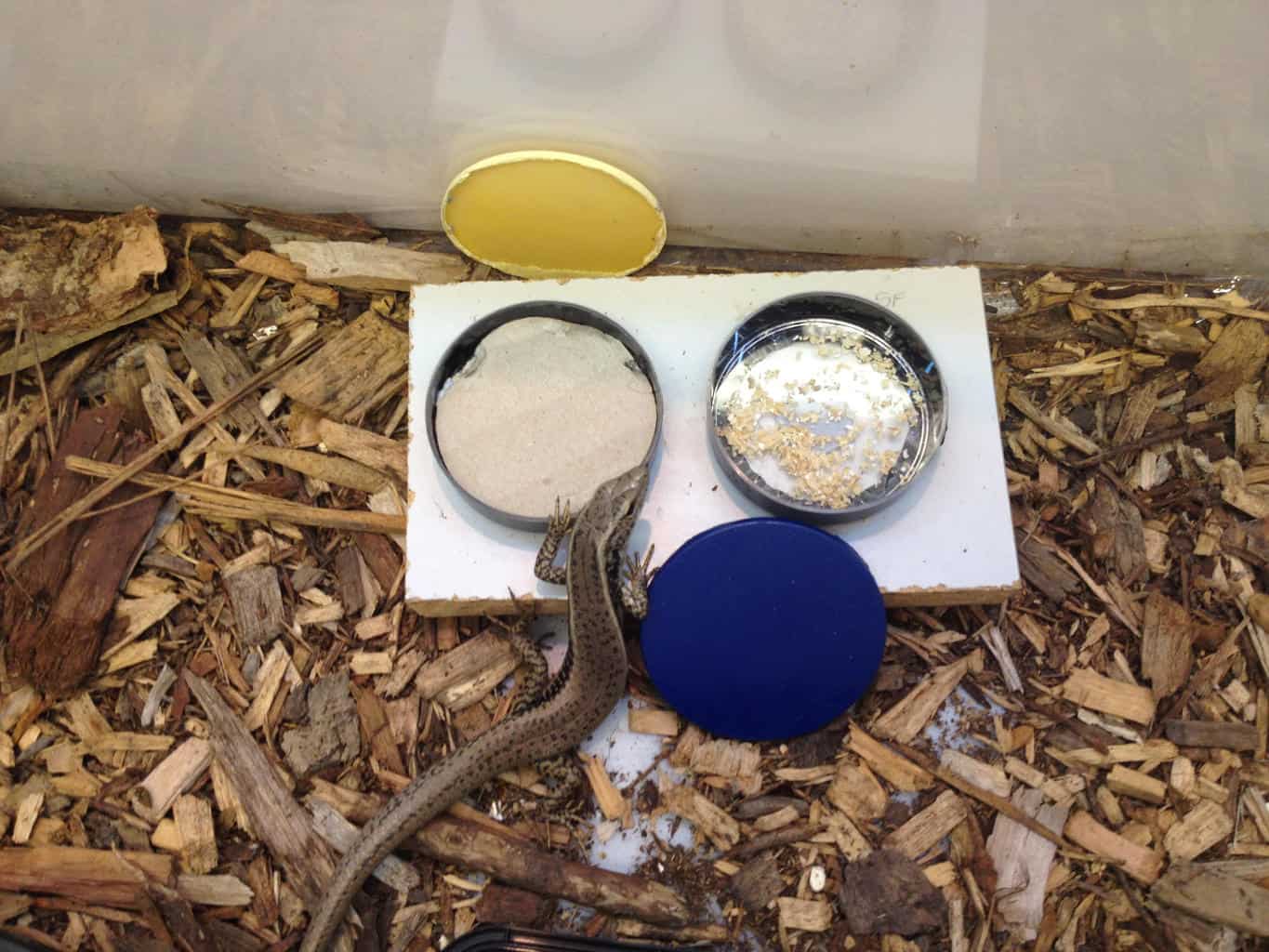
Q: You mentioned that you tested the lizards using one “instrumental task” and two “discrimination tasks”. Could you tell us more about the difference between these types of tasks?
A: The instrumental task simply involved removing a lid from a dish. We make this relatively easy by reducing the height of the lip on the lid. That way, lizards can push the lid off with their snout or foot.
Following the instrumental task, the lizards are presented with three coloured dishes (white, blue, brown) and only one has the reward (blue). This dish is always in the same location.
Once the lizards learnt this task, we changed the rule. Again, the reward dish was blue, however, the location was changed at random each new trial. Therefore, in this trial the lizards could no longer use the location as a cue, they had to learn that only colour reliably signalled the food reward.
Q: Most studies that examine learning proficiency across different domains are focused on mammals and birds. Why is it important to study this in lizards?
A: In order to broadly understand the evolution of cognition (learning and brain structure/size) in vertebrate animals, we need data on a wide range of species with different evolutionary histories. This helps us understand how, for example, natural selection may shape brains in particular circumstances.
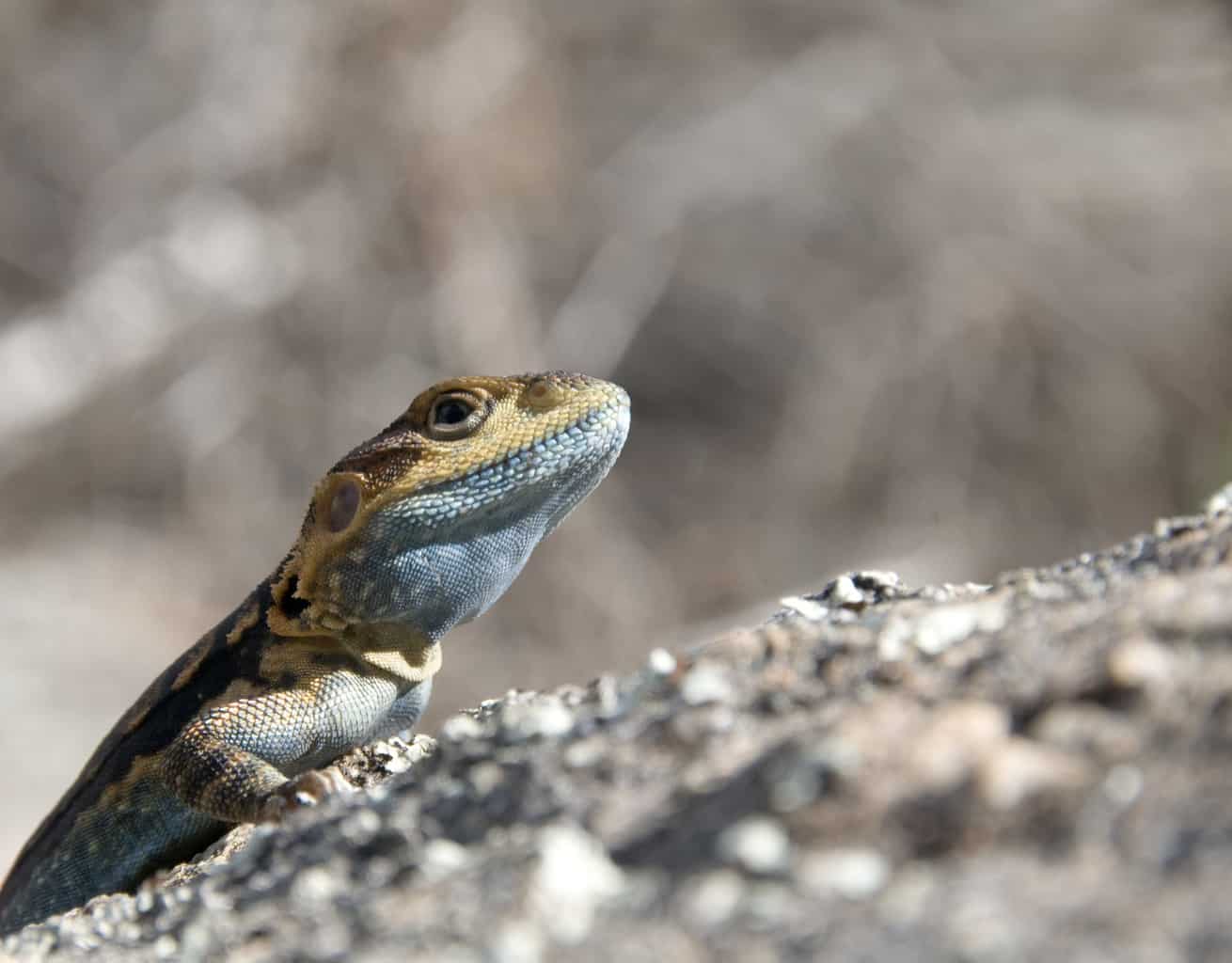 The concept of convergent evolution is useful here. Convergent evolution is when a similar structure evolves in unrelated animals because of a shared need. Classic examples of convergent evolution include wings in birds and bats (and insects), and dorsal fins in dolphins and fishes. So, we might expect similarities in brains across unrelated organisms that experience similar forms of natural selection because they live in similar environments.
The concept of convergent evolution is useful here. Convergent evolution is when a similar structure evolves in unrelated animals because of a shared need. Classic examples of convergent evolution include wings in birds and bats (and insects), and dorsal fins in dolphins and fishes. So, we might expect similarities in brains across unrelated organisms that experience similar forms of natural selection because they live in similar environments.
Also, lizards are ectotherms and have quite different life histories to many mammals and birds. By studying lizard cognition, we can gain a better insight into the evolution of cognition and how the environment might shape brains and learning.
Q: In another of the lab’s past studies2, you recorded social learning between adult female Australian tree skinks. Those who first watched another skink open a food container could learn how to do it faster and more effectively than the skinks who didn’t watch a counterpart beforehand.
Social learning has been observed in other lizard species before3. Why is it significant to see it in these skinks?
A: This study is the first (to the best of our knowledge) to examine social learning in a family-living lizard. We predicted social learning because you expect that animals that live in groups of closely related individuals (i.e. siblings, parents) are more likely to pay attention to what group members do, because the information they receive is going to be reliable.
Q: You also found4 that while the adult females would learn from each other, juvenile skinks did not appear to learn from adult skinks. What might explain this?
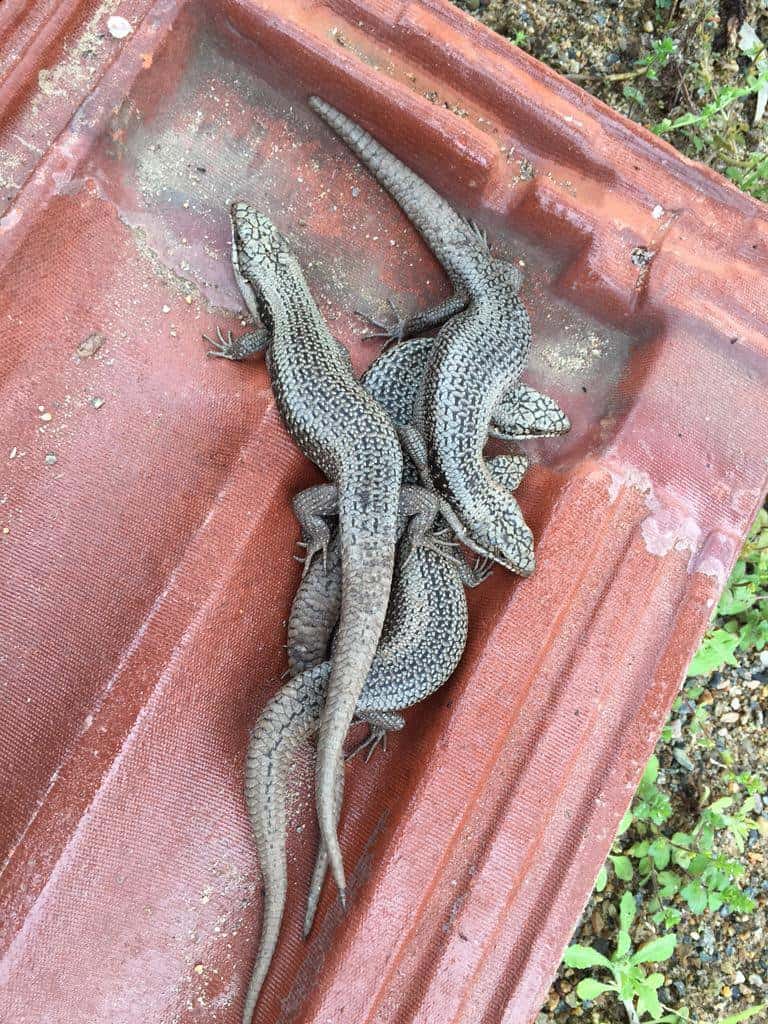 A: That is a difficult question! We can only really speculate. In that study, the juveniles were not necessarily related to the adults. Adult skinks can be a threat to youngsters because they sometimes represent a meal. It could be fear factor: juveniles may have been wary of adults and this may have interfered with their learning ability.
A: That is a difficult question! We can only really speculate. In that study, the juveniles were not necessarily related to the adults. Adult skinks can be a threat to youngsters because they sometimes represent a meal. It could be fear factor: juveniles may have been wary of adults and this may have interfered with their learning ability.
Q: Mother tree skinks often interact with their offspring and protect them from other adults. Do young skinks at least show any signs of learning from their mothers? What about other young skinks?
A: In the Egernia group of skinks, which contain a number of family-living species, the protection is more indirect. That is, by hanging out with your parents you significantly reduce the likelihood of being eaten by an unrelated adult skink.
This is still a bit of an unanswered question, because we have not been able to set up a study where we have had lots of mums and babies in social learning trials. We have shown social learning in adult female tree skinks (a species that commonly lives in family groups). Hopefully this question can be addressed in the future.
Q: Are there any big lizard cognition questions the Lizard Lab is planning to study in the future?
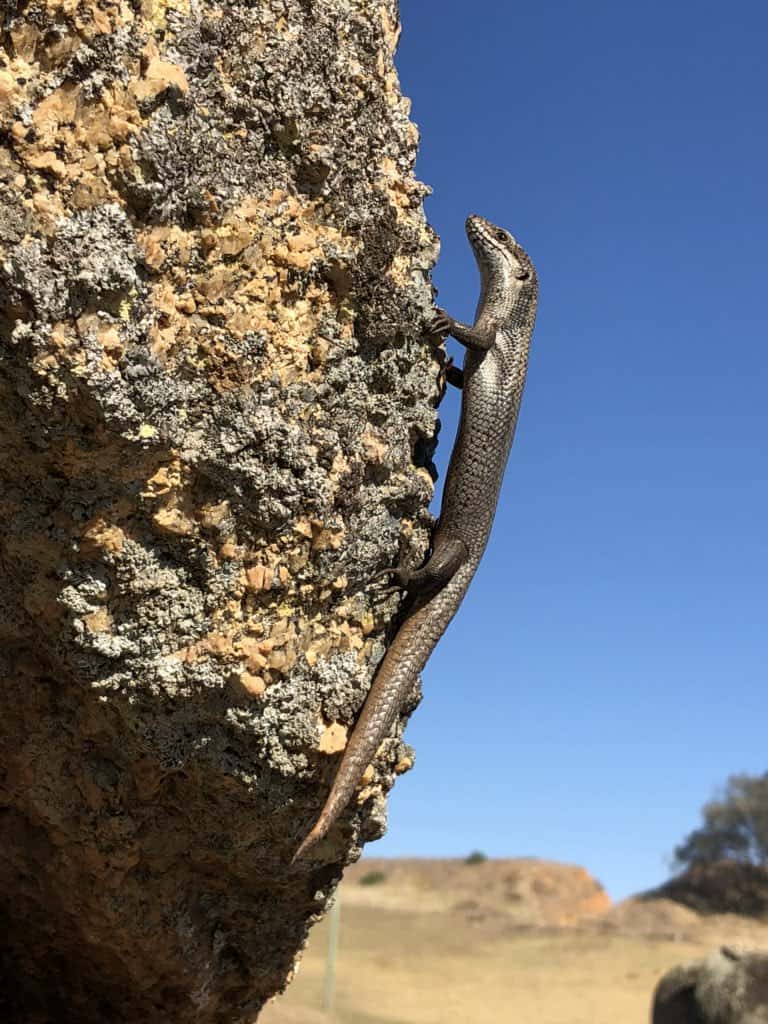 A: The relationship between an individual’s social demands and its learning ability is a big question. To put this another way, do species that have lots of social relationships and which have to keep track of lots of other individuals (and their relationships with these individuals), have greater cognitive demands? And do these species have larger brains or brain regions? If we can answer these questions, it could represent a significant contribution to our understanding of brain evolution.
A: The relationship between an individual’s social demands and its learning ability is a big question. To put this another way, do species that have lots of social relationships and which have to keep track of lots of other individuals (and their relationships with these individuals), have greater cognitive demands? And do these species have larger brains or brain regions? If we can answer these questions, it could represent a significant contribution to our understanding of brain evolution.
And as I mention in my answer to question #1, we are also interested in how global warming may affect the development of baby lizards and, in turn, how this affects their brains and learning ability.
Q: What’s the most important thing you think the world should know about lizards and their cognitive abilities?
A: Lizards are smarter than we think! We are only beginning to scratch the surface. For example, some lizards are capable of behavioural flexibility–the ability to solve a novel task or an existing task a different way. This would not have been considered a serious possibility not too long ago. We anticipate that lizards will continue to surprise us with their smarts, but I could be biased!
_
If you’d like to learn more about Martin’s work and the research being conducted at The Lizard Lab, you can follow the lab on Twitter (@lizard_lab) or visit its website: http://whitinglab.com/
This interview was conducted by Amanda Pachniewska, founder & editor of Animal Cognition.
Sources
All images shown are provided by The Lizard Lab, copyright of Martin Whiting.
1 – Yin Qi, Daniel W.A. Noble, Jinzhong Fu, Martin Whiting
Testing domain general learning in an Australian lizard
Animal Cognition
2 – Martin J. Whiting, Feng Xu, Fonti Kar, Julia L. Riley, Richard W. Byrne, Daniel W.A. Noble
Evidence for Social Learning in a Family Living Lizard
Frontiers in Ecology and Evolution
3 – Amanda Pachniewska
Reptiles Can Learn Through Imitation
Animalcognition.org
4 – Julia L. Riley, Anna Küchler, Théo Damasio, Daniel W. A. Noble, Richard W. Byrne, Martin J. Whiting
Learning ability is unaffected by isolation rearing in a family-living lizard
Behavioral Ecology and Sociobiology

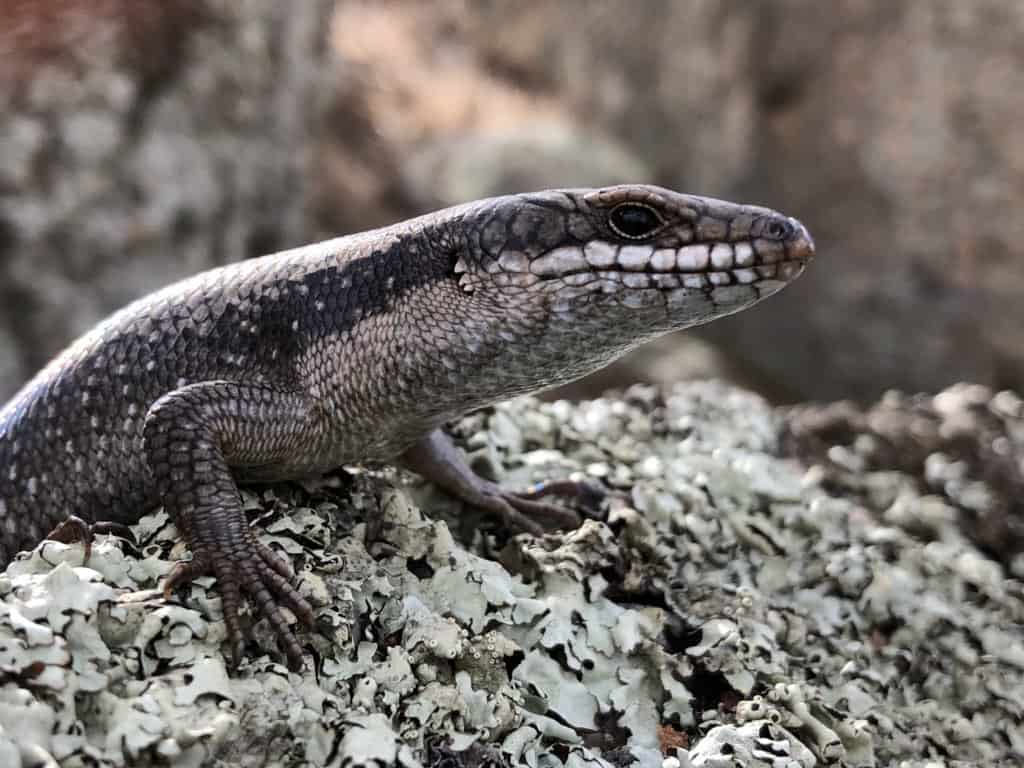


Someone must have miss clicked. Fixed. Thanks. 🙂
Why is this tagged as invertebrates?